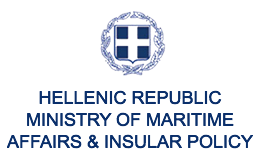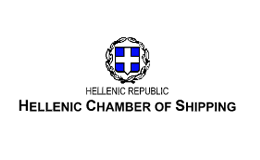
by Basil M. Karatzas, CEO, Karatzas Marine Advisors & Co.
Ships are expensive assets, even small pleasure boat owners know. A small handysize bulker of 32,000 dwt has cost no less than $20 mil as a newbuilding even during weak markets; on the other hand of the spectrum, crude oil supertankers (VLCCs) currently cost appr. $85 mil brand-new, while LNG tankers cost almost twice as much.
Being a successful shipowner, therefore, requires access to capital, as plentiful and as at low cost as possible. Even flamboyantly rich shipowners do not have enough money to own outright their fleets (in most cases), and they have to depend on financial “leverage” and financial partnerships.
Banks traditionally had been providing most of the financing in the maritime industry; throughout business cycles, banks could be depended upon to provide 50-80% leverage, usually in the form of a first preferred ship mortgage – just like a bank would provide a mortgage loan for a residential property, with the asset as collateral. There have been dedicated banks to shipping (typically Scandinavian, British and German due to maritime history) and several more banks were transient in the industry when times were good. And, while easiness of financing varied depending on the phase of the business cycle, it was always available, as long as the shipowner had an impeccable record honoring previous commitments to the banks.
A decade after the Lehman Brothers collapse, banks are heavily regulated (although there is talk of late of loosening banking regulations, at least on one side of the pond), and ship mortgages and asset-backed financing are not the preferred line of business any more. In addition, many banks with shipping exposure are actively still selling shipping loans, trying to cut their exposure to the industry to nil. And, for many shipping banks with big losses from their shipping portfolios, it’s hard to convince senior management and shareholders on the appeal of the shipping industry these days anew; in some corners, shipping and maritime have become dirty words.
Besides small lending on a very selective basis by a handful of small banks for ship mortgages, so small that almost does not matter, traditional lending by the banks is a dead business. There is much more activity in terms of corporate lending to shipowners with big balance sheets and consolidated financials, and with long term and “bankable” charter employment, but there are relatively few such shipowners. The majority of the shipowners are smaller companies, trading their vessels in the spot market, and taking preponderous exposure to the vicissitude of the freight markets.
It has been estimated that shipping banks loan portfolios stood at close to $600 billion at the peak of the market in 2008, which is a very big funding gap to fill.
There has been a plethora of so-called credit funds entering the shipping finance market and aiming at filling the funding gap left behind by the shipping banks. Credit funds has been a new mania on the Wall Street, as such funds try to exploit the inability and inefficiency of the regulated banks to service small and mid-sized companies and companies that cannot “tick all the boxes” of a traditional lender. A recent article in the Financial Times states that between 2010 and now, credit funds based in North America doubled in capacity from app. $75 billion to more than $160 billion, so much so that “shadow banking” started being a concern. Credit funds active in shipping are usually funds dedicated to the industry and not part of multi-industry funds, and often are set up and managed by private equity funds and institutional investors with prior exposure to shipping. Fine print aside, credit funds usually charge at least 7% spread over Libor, with several of them well into double-digit territory. No-one expected credit funds to be as “cheap” as bank loans, but at 700 bps minimum margin, shipowners can barely claim that they have access to effective capital. After the honeymoon period of the first entrants to the market, credit funds cannot be the dependable source of capital the shipping industry requires, it seems.
Looking into equity, in the last decade, when the freight market was the best in a lifetime and equity markets were buoyant, there were several attempts of Initial Public Offerings (IPOs) by several shipping companies. Their track-record aside, public equity markets at present are looking for only large (billion-plus balance sheet, etc) and well established shipping companies with a “story”, hopefully a story of growth; for many of the smaller shipowners, the public equity (and debt) markets cannot be considered a source of capital, another dead-end for shipping financing.
Chinese leasing recently has been in the news as many Chinese lessors are looking into expanding aggressively in the international shipping market, and they have been active with sale-and-leaseback transactions. Although more bureaucratic than western financing, their overall terms are rather lenient – but again, for shipowners with sizeable fleets and consolidated financials.
Many industry experts have been contemplating what the source of capital will be for shipping. It’s really a very critical question to answer, and we think, it will affect the nature of the shipping industry in the years to come. Karatzas Marine Advisors & Co even held a shipping finance conference in Athens in early 2018 focused on just such question, and a follow up conference is already in the works for January 2019. Because of shipping finance (and also new regulations, etc), we believe that the shipping industry is at an inflection point where drastic changes are about to take place. Likely shipping in the next decade and the decades to come will be of a different nature, and that’s mainly because the nature of the shipping finance is a-changing. A great deal of shipowners will be materially affected by it, unless they start being pro-active right away.












































